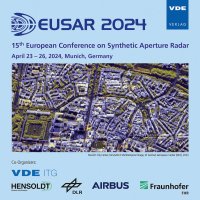Comparison of Sea State Parameters derived from multiple SAR Missions
Konferenz: EUSAR 2024 - 15th European Conference on Synthetic Aperture Radar
23.04.2024-26.04.2024 in Munich, Germany
Tagungsband: EUSAR 2024
Seiten: 4Sprache: EnglischTyp: PDF
Autoren:
Pleskachevsky, Andrey; Tings, Björn; Jacobsen, Sven; Schnupfhagn, Christoph
Inhalt:
In this study, the Sentinel-1 (S1) C-band Interferometric Wide Swath Mode (IW) and TerraSAR-X (TS-X) StripMap (SM) mode were collocated for sea state analysis. The majority of all maritime data from the archives of both satellite missions in 2020 were processed (ca. 12,000 S1 IW scenes) using the algorithm “SAR-SeaStaR” (SAR Sea State Retrieval). Processing results were collocated to each over, to a spectral hindcast wave model and to buoy measurements in order to evaluate uncertainties in the sea state processing. From ca. 13,000 TS-X SM ocean scenes 84 scenes were collocated to S1-IW. The total uncertainty of wave height between two sensors corresponds to the uncertainty between each sensor and ground truth (models and buoys). The local differences in processed sea state parameters are found to be connected to local effects such as surface slicks, ships and wakes. These artefacts produce different SAR signatures for different radar bands, satellite altitudes and SAR modes. The collocated scenes help to detect outliers in sea state, connect it to artefact types and improve the filtering and denoising procedures.


